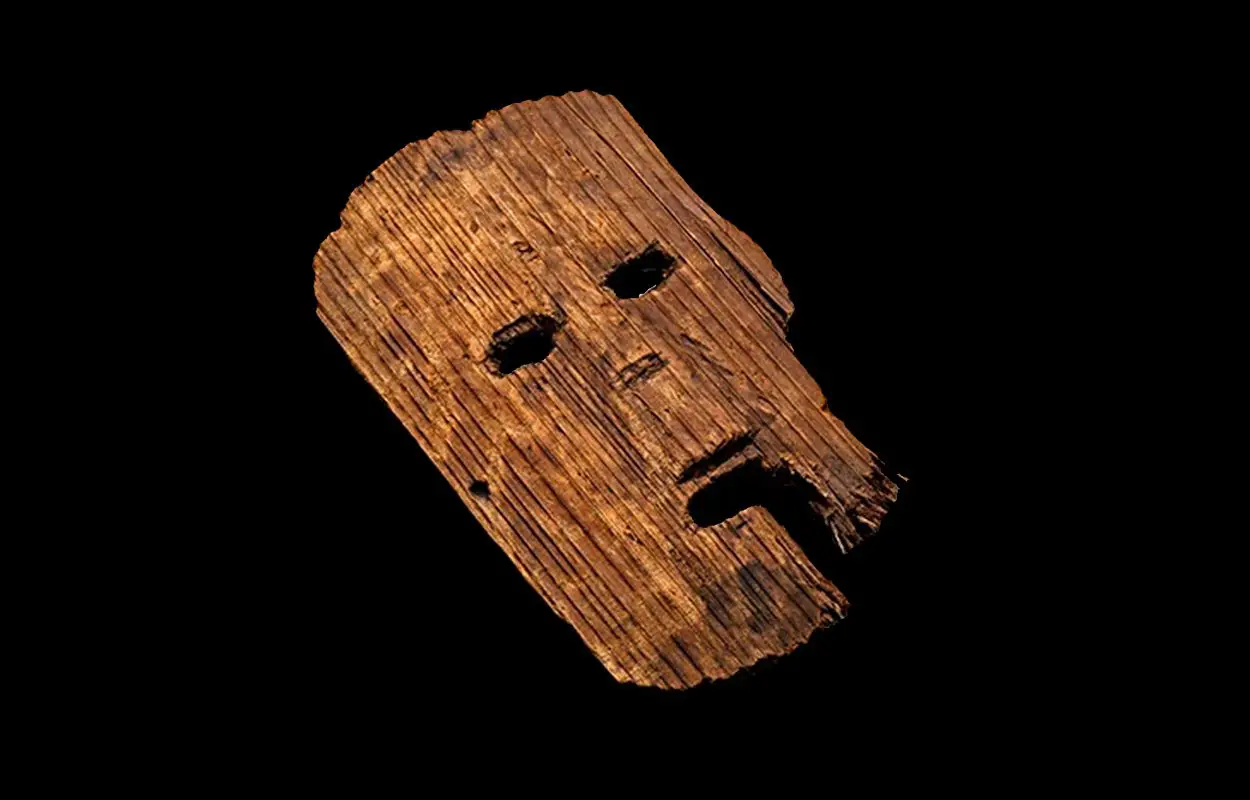In an announcement by the Osaka Centre for Cultural Heritage, archaeologists have uncovered an 1800-year-old ritual mask in the Osaka Prefecture, Japan.
The discovery was made during excavations to extend the Osaka Monorail in the city of Higashiōsaka, where the team found a mask hewn from a cedar tree with a representation of a human face.
The mask measures around 30cm in height by 18cm wide and features two eye holes, a mouth, and a perforated hole surviving on one side that probably held string for holding the mask on the wearers face.
The researchers suggest that the mask was used for ritual ceremonies during important agricultural festivals around 1800-years-ago during the Yayoi era. During this period, Japan transitioned to a settled agricultural society using agricultural methods that were introduced initially in the Kyushu region from Korea.
Distinguishing characteristics of the Yayoi period include the appearance of new Yayoi pottery styles, improved carpentry and architecture, and the start of an intensive rice agriculture in paddy fields.
The discovery is the third example of a wooden mask from this period and is similar to another mask found in the Makimuku ruins in the Nara Prefecture.
Kaoru Terasawa, director of the Research Centre for Makimukugaku, said: “I believe the mask represented a ‘spirit of a head,’ which was believed to be a god in the shape of a human and represented the authority of Okimi.”
The Okimi was the leader of the Yamato Kingship, a dominant political coalition comprising of influential clans based in what is now Nara Prefecture, which held sway from the third to the seventh century AD.
Excavations also revealed a wooden water bucket and a charred hoe-shaped wooden object in flood sediment 2.9 metres beneath the ground surface.
The mask will be displayed at the Museum of Yayoi Culture in Osaka Prefecture’s Izumi between April the 29th and May the 7th.
Header Image Credit : Osaka Centre for Cultural Heritage





